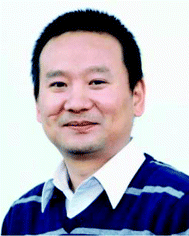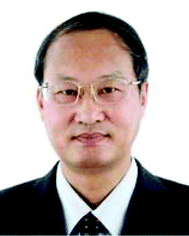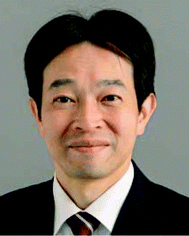Nanoscale & Nanoscale Advances joint themed collection on nanocarbons
Nianjun
Yang
 *a,
Dai-Wen
Pang
*a,
Dai-Wen
Pang
 b and
Yasuaki
Einaga
c
b and
Yasuaki
Einaga
c
aInstitute of Materials Engineering, University of Siegen, Siegen 57076, Germany. E-mail: nianjun.yang@uni-siegen.de
bCollege of Chemistry, Nankai University, Tianjin 300071, China. E-mail: dwpang@whu.edu.cn
cDepartment of Chemistry, Keio University, 3-14-1 Hiyoshi, Yokohama 223-8522, Japan. E-mail: einaga@chem.keio.ac.jp
Nanocarbon research was spawned after the discovery of the soccer-ball shaped buckminsterfullerene (C60) and fullerene-structures (C70, C84) in the 1980s, carbon nanotubes in the early 1990s, and later graphene at the beginning of the 2000s. As new members of the nanocarbon family, carbon nanoparticles have emerged such as diamond nanoparticles, carbon dots, and graphene (quantum) dots. Fully determined by the structures and surface chemistry of these nanocarbons, their physical, chemical, and engineering features are different, leading to their numerous applications in the fields of biomedicine, energy, catalysis, detection, environment, engineering, and electronics.
As a high impact international journal, this themed issue at Nanoscale publishes high quality and interdisciplinary research across nanoscience and nanotechnology of nanocarbons. It mixes reviews, communications, and full papers, covering the most recent progress and achievements in the synthesis and characterization of various nanocarbon films (DOI: 10.1039/C9NR01722D) (e.g., graphene (DOI: 10.1039/C9NR02281C), diamond (DOI: 10.1039/C9NR02593F), diamond-like carbon, carbon nanotubes, fullerenes, etc.), their nanostructures (e.g., graphene/carbon dots, diamond particles (DOI: 10.1039/C9NR01716J), etc.), and their composites. Of special focus, this themed issue reflects the extraordinarily rapid development in energy (DOI: 10.1039/C9NR02476J), environmental (DOI: 10.1039/C9NR02007A and DOI: 10.1039/C9NR02376C), catalytic (DOI: 10.1039/C9NR01639B), and biomedical (DOI: 10.1039/C9NR01997A) applications. In addition, the scope of this issue loosely aligns with an accompanying symposium held at the 2019 Spring E-MRS meeting: Symposium M – Advanced carbon materials: electrochemical aspects, which was held in Nice, France from 27–31 May, 2019.
As guest editors of this themed issue, we thank all authors for their great contributions. The guidance and support from the editors and editorial staff of Nanoscale throughout the whole process is highly appreciated. We hope such an issue appeals to scientists, researchers and professionals interested in nanoscience and nanotechnology, including those in the areas of physics, chemistry, biology, medicine, materials, energy, environment, information technology, detection science, healthcare and drug discovery, electronics, and those beyond.
Read the full collection on-line.1
References
| This journal is © The Royal Society of Chemistry 2019 |



